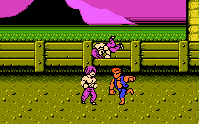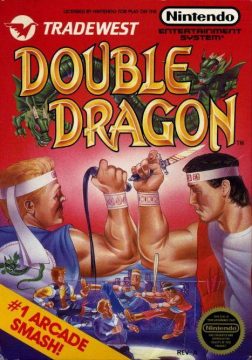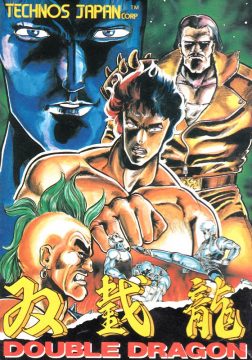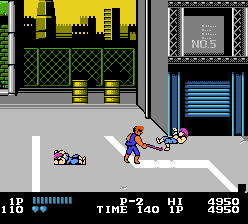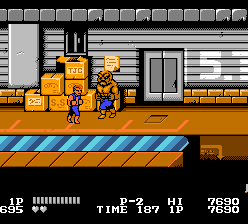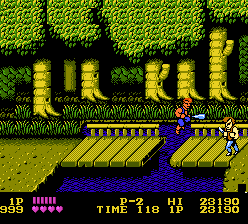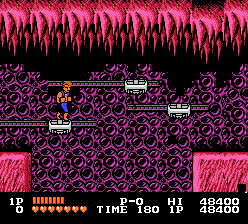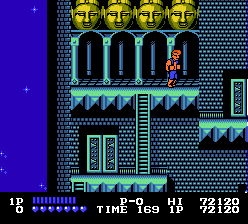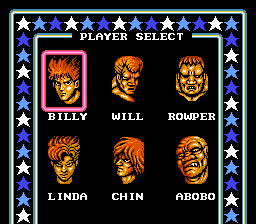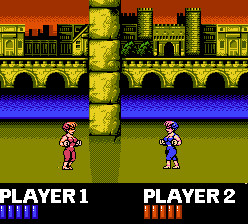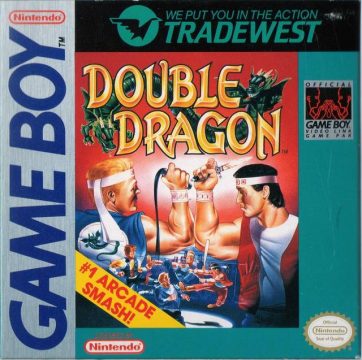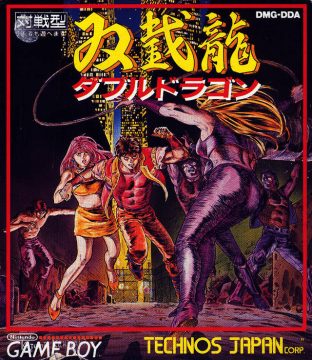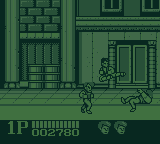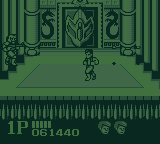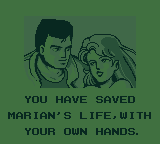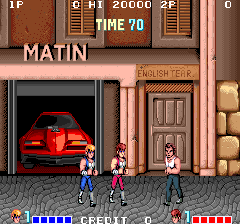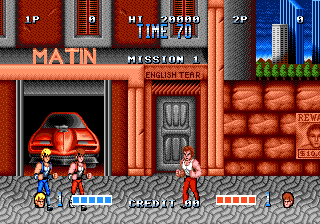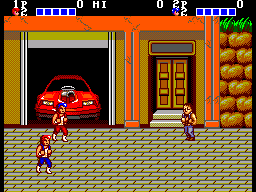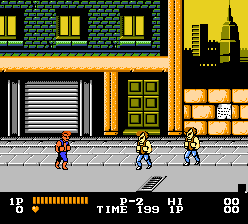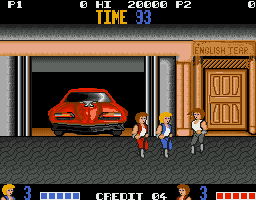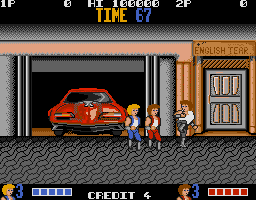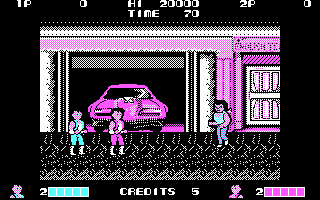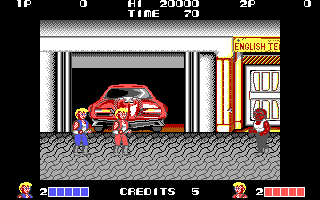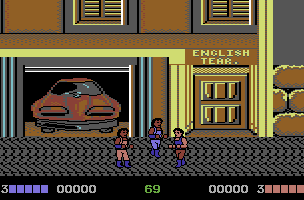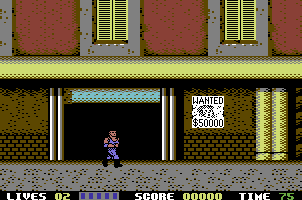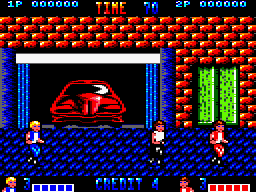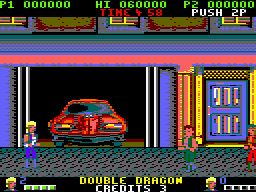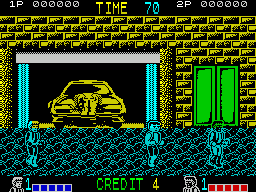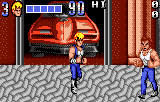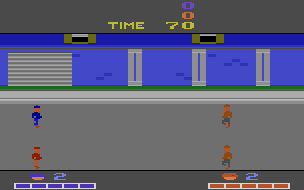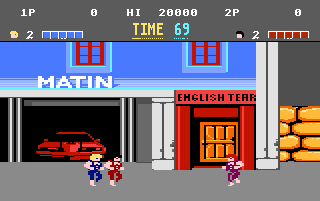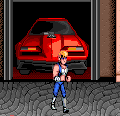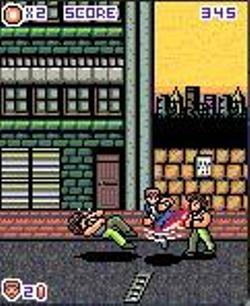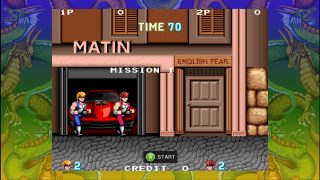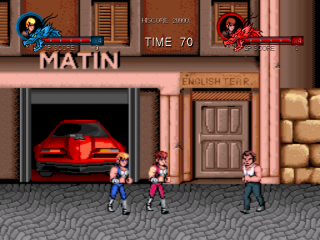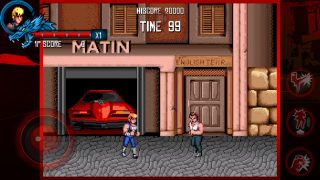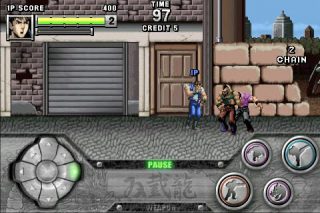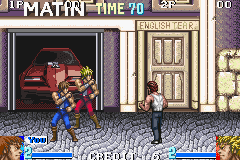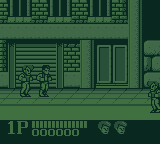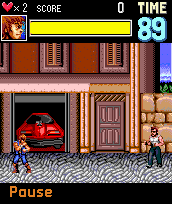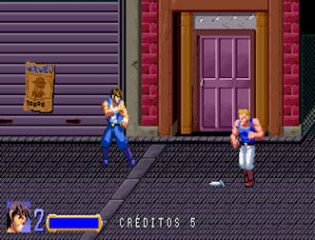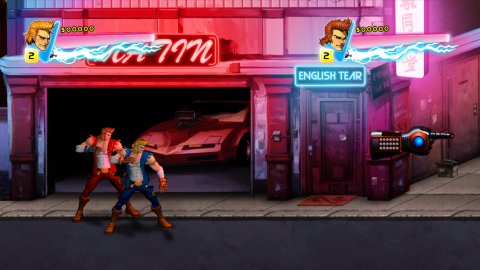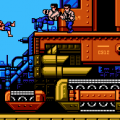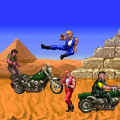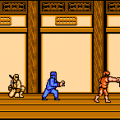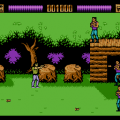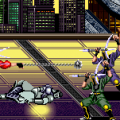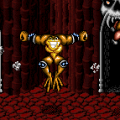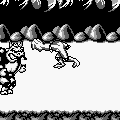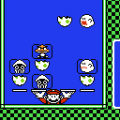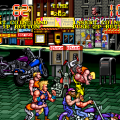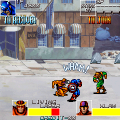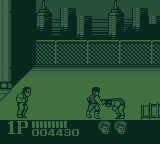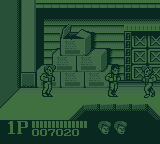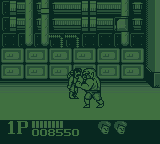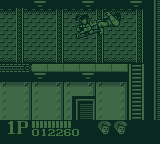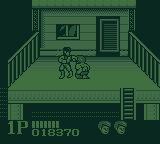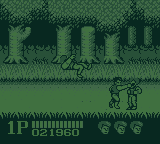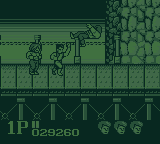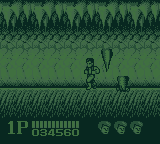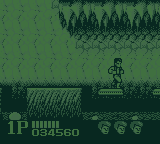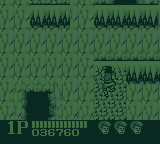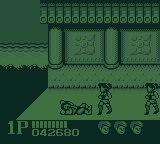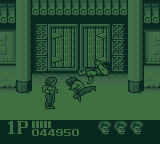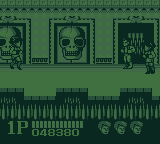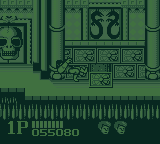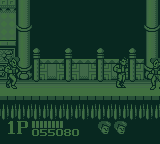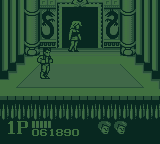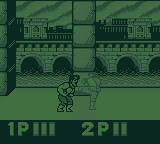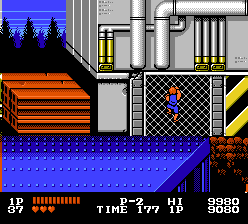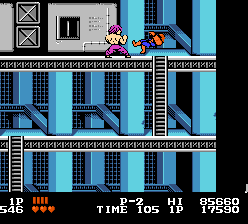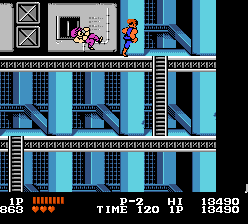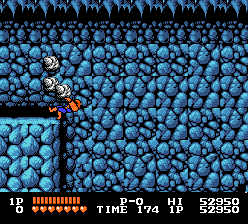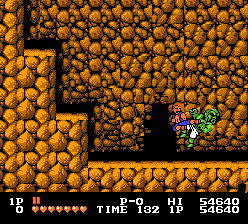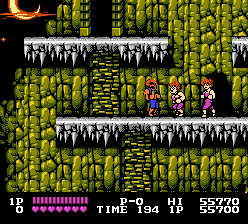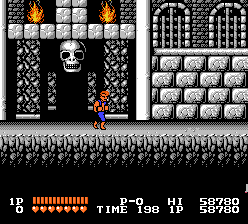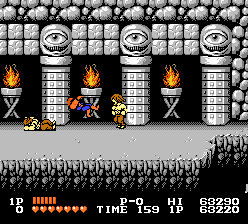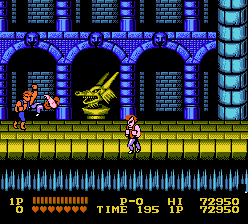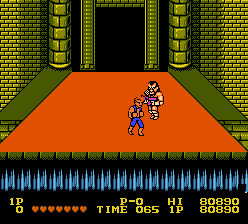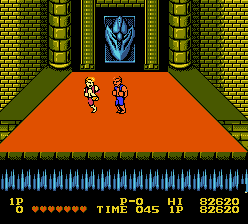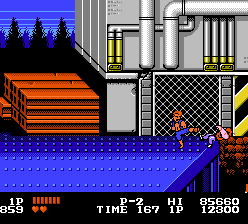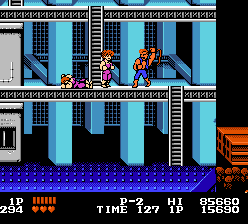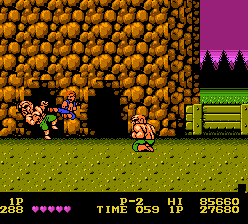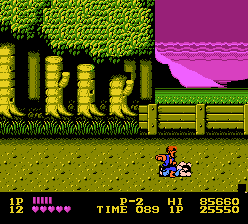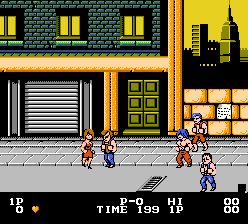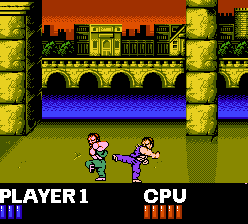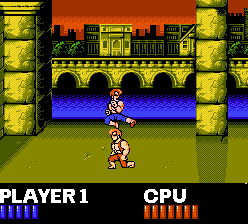- Double Dragon
- Double Dragon (NES / Game Boy)
- Double Dragon 2 (Arcade)
- Double Dragon II (NES/PCE)
- Double Dragon 3 (Arcade)
- Double Dragon III (NES)
- Double Dragon II (Game Boy)
- Super Double Dragon
- Double Dragon: The Revenge of Billy Lee
- Double Dragon V
- Double Dragon (Neo Geo)
- Rage of the Dragons
- Double Dragon Advance
- Double Dragon (Mobile)
- Double Dragon II: Wander of the Dragons
- Double Dragon (Zeebo)
- Abobo’s Big Adventure / Fighting of Double Dragon
- Double Dragon Neon
- Double Dragon IV
- Double Dragon: Other Media
The most widely remembered version of Double Dragon is undoubtedly the NES game. Ostensibly another port of the arcade game, it takes a wide range of liberties with the interpretation. The entire graphical style is more in line with Technōs’ Kunio-kun series, with characters that go for exaggerated expression rather than gritty realism. This is most obvious in Abobo, who now has a freakishly large head, but the entire rest of the cast looks a bit more cartoonish as well.
The list of changes starts with a big bummer – while you can select a two player mode from the start menu, this simply lets two players take turns like in Super Mario Bros., and Jimmy appears only as Willy’s brainwashed henchman. Another compromise involves the enemy encounters, which have been hugely simplified. There are never more than two enemies around, and the game never mixes two different types. Especially Willy suffers from this, as he’s laughably easy here when facing Billy alone. Weapons now disappear when crossing certain invisible borders, which usually doesn’t take very long.
All the stages start out like direct adaptions of the originals, but turn into something else halfway through. The first stage ends in a warehouse where Billy fights Abobo at a conveyor belt leading into a pit, similar to the stage 2 boss setup from the arcades. The second stage leads into a skyscraper under construction instead, where you first meet the new enemy Chintai, a kung fu fighter with his hair covering half his face, who replaces the boring Jeff. Stage 3 and 4 add several additional platforming segments, and the Black Warriors HQ has a very different, almost cult-looking design.
The biggest change, however, was reserved for the moveset. You start the game with only the punch, kick and headbutt available – all the other moves are obtained via an RPG-lite style experience system. Hitting enemies is now rewarded with a certain amount of experience points depending on the attack, and each time the counter goes above 999, you’re awarded an additional heart, which extends the range of possible actions. Two hearts add the uppercut and roundhouse kick combo finishers, and with three Billy can perform the jump kick maneuver. The fourth heart unlocks access to grappling moves.
Five hearts even bring an additional move inherited from Renegade: When pressing down while standing above opponents who are lying in the dust, Billy pins them down to finish them on the ground. The level six move is the elbow smash, which is activated automatically when pressing the punch button as an enemy is creeping up from behind. The jumping roundhouse kick for seven hearts works similarly, except for enemies close up front during a kick combo. Unfortunately, that one isn’t very reliable, actually making it harder to hit enemies.
That is still not the end of the differences. The co-op gameplay may be gone, but there is still something on offer for two friends to play together, or rather against each other. Plainly called “Mode B”, this option reveals a fully fledged 1-on-1 fighting game. Three years before Street Fighter II, this was a pretty impressive thing to give away as a bonus mode. Unfortunately, meaning it was released before Street Fighter II also means that the genre wasn’t standardized yet, and almost all attempts that came before were not very good. Double Dragon‘s Mode B was no exception.
In a time when most fighting games only let you play as generic karate guys, Double Dragon actually allows to choose from all opponents from the main game, with the exception of Willy. They all come with their individual set of moves, but the catch is that both players have to use the same character, likely due to RAM constraints to accomodate the double sized sprites compared to the regular mode. It still plays very much like a beat-em-up, with movement on two axes and the risk of turning your back at the opponent, but the head butt is replaced by a dash, which allows for additional running attacks. The actions are still very limited though, as maneuvers like the elbow attack and grapples are missing. The controls can be pretty frustrating too, so while this mode was definitely a nice thing to have in 1988, it was anything but a polished experience.
Double Dragon (ダブルドラゴン / 双截龍) – Game Boy, 3DS (July 20, 1990)
The Game Boy rendition of Double Dragon plays like somewhat of a mix between the arcade and NES versions, although it’s closer to the latter. The controls are all NES, but the RPG elements were dropped and Billy got all his moves ready from the start. The ground attack is gone, but so is the head butt, making for a rather slim arsenal of maneuvers.
The game is mostly based on the NES version except for Abobo, who looks even more deformed and has learned Burnov’s grapple from Double Dragon II. The second stage has become even more elaborate, and later parts include some of the new traps from the NES Double Dragon II like the floor that starts giving away. The Black Warriors HQ has doors in the background, which open cyclically to suck Billy to a spiky death, although unlike the NES there is no explanation why characters gravitate towards them.
But the game isn’t all expansion compared to the NES game: The 1-on-1 mode loses the character selection, so it’s just Billy and Jimmy fighting each other. The Game Boy rendition is also really hard, because dying always resets you to the very beginning of a stage. But it was still an impressive feat to deliver a portable version that could mostly keep up with its NES counterpart, early in the Game Boy’s second year.
